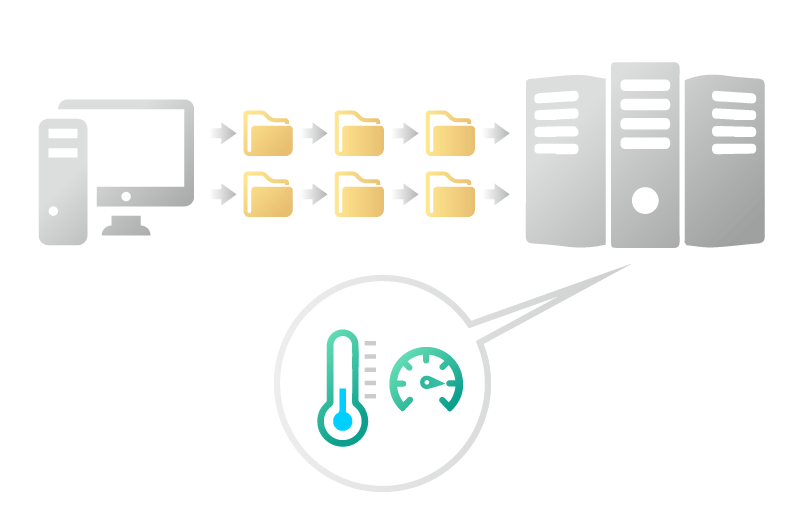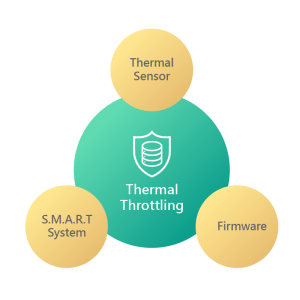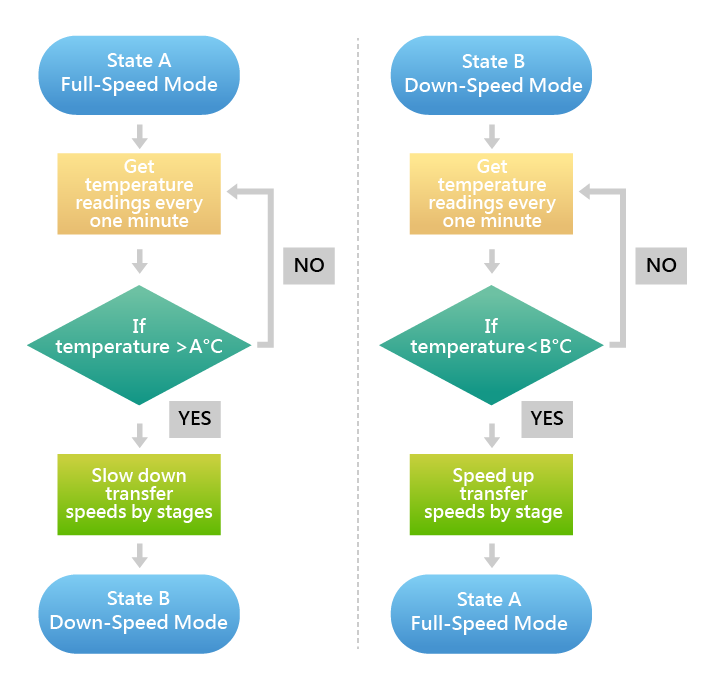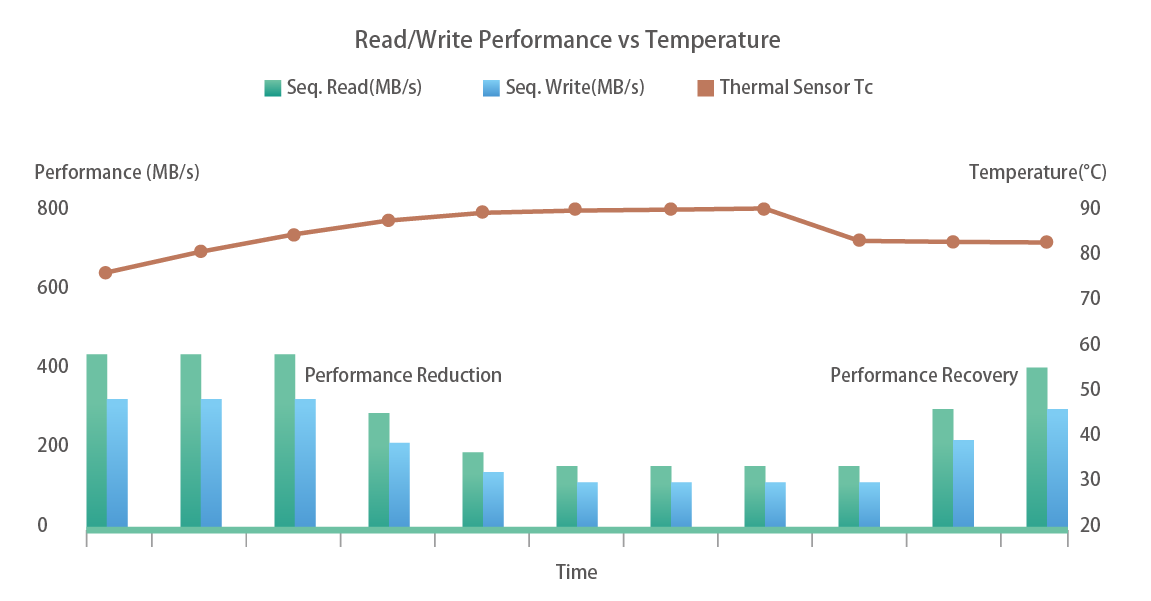Thermal Throttling
Thermal throttling mechanism dynamically adjusts frequency scaling to enhance data reliability and provides sustained performance while overheating.

Thermal throttling mechanism dynamically adjusts frequency scaling to enhance data reliability and provides sustained performance while overheating.
As SSD performance demands increase, power requirements generally increase, while physical size requirements for SSDs generally stay the same or become smaller. The expand in power requirements without a corresponding increase in physical size leads to challenges to dissipate more heat from SSDs and prevent failures due to overheating. This can potentially put data stored on the SSDs at the risk of being corrupted and hardware components in danger of being damaged.


To prevent overheating, Apacer equips SSD products with a built-in thermal sensor to monitor the temperature of the SSD via S.M.A.R.T commands and configures the drive with firmware deployment of thermal throttling to manage the device temperature when responding to increased temperature conditions
When the temperature of SSD reaches a certain level which could lead to malfunction of the drive, thermal throttling will be activated to control the temperature of the drive to not exceed its maximum threshold temperature by reducing its performance.
Performance is only permitted to drop to the extent necessary for recovering a stable temperature to cool down the device’s temperature. Once the temperature decreases to the minimum threshold value, transfer speeds will rise back to its optimum performance level.
This protective mechanism can ensure SSD operates within temperature limits to keep user data and the device safe as well as extend product longevity.

For an SSD configured with thermal throttling, it is accessed at full speed in initial phase. As the drive continuously experiences a large number of requests, its temperature increases to the maximum threshold temperature. When the temperature exceeds the threshold value, the drive starts to throttle by decreasing in performance by multiple stages, thereby allowing the device to cool down.

> Drive throttles when temperature rises above the maximum threshold value.
> Performance reduction by stages.
> Drive stops throttling when temperature drops below the minimum threshold value.
> Performance recovery by stages.